This website uses cookies so that we can provide you with the best user experience possible. Cookie information is stored in your browser and performs functions such as recognising you when you return to our website and helping our team to understand which sections of the website you find most interesting and useful.
Home Care In Modesto, CA

They say that your golden years are the best years of your life. For most older Americans, that's how it should be - a time to relax, reflect, and live life in a familiar place. After all, senior citizens in the U.S. have worked tirelessly to build a better economy, serve their communities, and raise families.
However, as seniors grow older, completing daily tasks like showering and enjoying activities such as visiting Modesto Arch in Modesto, CA gets harder without someone by their side. Unfortunately, many older Americans aren't able to rely on their adult children for help. The reality in today's world is that family members do not have the skills or time to dedicate to caring for their parents. That's where Always Best Care Senior Services comes in.
Our in-home care services are for people who prefer to stay at home as they grow older but need ongoing care that family or friends cannot provide. More and more older adults prefer to live far away from long-term, institutionalized facilities and closer to the place where they feel most comfortable - their home. Home care in Modesto, CA is a safe, effective way to give your loved ones the care they need when they need it the most.

 Home Care Services
Home Care Services
- Home Care in Modesto, CA
- The Always Best Care Difference
- Types of In-home Care in Modesto, CA
- Benefits of Home Care in Modesto, CA
- Aging in Place: The Preferred Choice for Most Seniors
- Affordable Care Plans
- Compassionate Care. Trusted Caregivers
- Assisted Living Referral Services
- Taking the First Step with Always Best Care
 Service Areas
Service Areas
The Always Best Care Difference
Since 1996, Always Best Care has provided non-medical in-home care for seniors to help them maintain a healthy lifestyle as they get older. We are proud to have helped more than 25,000 seniors maintain higher levels of dignity and respect. We focus on providing seniors with the highest level of in-home care available so that they may live happily and independently.
Unlike some senior care companies, we genuinely want to be included in our clients' lives. We believe that personalized care is always the better option over a "one size fits all" approach. To make sure our senior clients receive the best care possible, we pair them with compassionate caregivers who understand their unique needs. That way, they may provide care accordingly without compromising their wellbeing.
The Always Best Care difference lies in life's little moments - where compassionate care and trustworthy experience come together to help seniors live a fruitful, healthy life. Whether you are an aging adult that can't quite keep up with life's daily tasks or the child of a senior who needs regular in-home services, Always Best Care is here to help.
“My family has been fortunate to have Always Best Care provide care for my elderly”
“Love the information the office provide and how wonderful the office looked. Chelsea provide me”
“Highly Experienced #Caregivers provide everything in levels one and two, plus knowledgeable assistance to help”
“In retirement years, many #elders start to feel lonely and depressed with the lack of”
“Worrying about senior’s care and #health in Assisted Living is common. Well, you can stop”
“My mother was under the care of Always Best Care from 2018 until her untimely”
“My family has been fortunate to have Always Best Care provide care for my elderly mother for approximately two years. My mother is in her late 80s and not an easy person to deal with at times. Subsequent to her hospitalization and release, we coordinated with Always Best Care for caregiver, Chelsea to come into her home every week to assist my mother with her daily life, chores, etc. Chelsea has literally been a gift from God to us. I honestly don’t know what we would do without the professional help of Chelsea. She handled my mother’s many needs and moods with a very delicate and compassionate touch. She is simply the best. I cannot recommend her professional qualities and services highly enough. Please feel free to contact me should you require any additional information. Thank you very much.”
“Love the information the office provide and how wonderful the office looked. Chelsea provide me with enough information.”
“Highly Experienced #Caregivers provide everything in levels one and two, plus knowledgeable assistance to help seniors who are suffering from a chronic illness, who are bed-bound, and those who are on hospice.”
“In retirement years, many #elders start to feel lonely and depressed with the lack of a social life. Hire #caregivers from Always Best Care of Fresno to reduce your senior’s loneliness and ensure their care.”
“Worrying about senior’s care and #health in Assisted Living is common. Well, you can stop fretting now. Contact Always Best Care of #Fresno and find the best Assisted Living communities near you.”
“My mother was under the care of Always Best Care from 2018 until her untimely passing in 2022. She had a number of physical disabilities and the staff from Always Best Care provided quality care in assisting with her hygienic needs, attending to light housekeeping, food preparation and providing transportation to and from medical appointments. My mother always felt well cared for by the staff of Always Best Care. When my mother passed away in mid-December 2022, the staff at Always Best Care recognized the emotionally vulnerable position of my 87 year old Father and decided to continue assigning a compassionate Caregiver for him. Their ability to recognize the importance of this continuum of care is greatly appreciated by our family. Ultimately, our family has been very satisfied and pleased with the service that Always Best Care has provided to both our parents. They have demonstrated sincere concern, care and compassion when it comes to our parents’ physical and emotional care and we would recommend their services to anyone”
What is Non-Medical Senior Care in Modesto, CA?

Home is where the heart is. While that saying can sound a tad cliche, it is especially true for many seniors living in America. When given a choice, older adults most often prefer to grow older at home. An AARP study found that three out of four adults over the age of 50 want to stay in their homes and communities as they age.

When you begin to think about why, it makes sense. Home offers a sense of security, comfort, and familiarity.

The truth is, as we age, we begin to rely on others for help. When a family is too busy or lives too far away to fulfill this role, in-home senior care is often the best solution. Home care services allow seniors to enjoy personal independence while also receiving trustworthy assistance from a trained caregiver.

At Always Best Care, we offer a comprehensive range of home care services to help seniors stay healthy while they get the help they need to remain independent. As your senior loved one gets older, giving them the gift of senior care is one of the best ways to show your love, even if you live far away.

Types of Elderly Care in Modesto, CA
To give our senior clients the best care possible, we offer a full spectrum of in-home care services:

Personal Care Services
If your senior loved one has specific care needs, our personal care services are a great choice to consider. Personal care includes the standard caregiving duties associated with companion care and includes help with tasks such as dressing and grooming. Personal care can also help individuals with chronic conditions like diabetes.
Common personal care services include assistance with:
- Eating
- Mobility Issues
- Incontinence
- Bathing
- Dressing
- Grooming


Home Helper Services
Sometimes, seniors need helpful reminders to maintain a high quality of life at home. If you or your senior has trouble with everyday tasks like cooking, our home helper services will be very beneficial.
Common home helper care services include assistance with:
- Medication Reminders
- Meal Preparation
- Pet Care
- Prescription Refills
- Morning Wake-Up
- Walking
- Reading


Companionship Services
Using this kind of care is a fantastic way to make life easier for you or your senior loved one. At Always Best Care, our talented caregivers often fill the role of a companion for seniors. That way, older adults can enjoy their favorite local activities, such as visiting Moose Park in Modesto, CA with friends while also receiving the care they need daily or weekly.
Common companionship services include:
- Grocery Shopping
- Transportation to Appointments
- Nutritional Assistance
- Conversation
- Planning Outings
- Completing Errands
- Transportation to Community
- Events and Social Outings


Respite Care Services
According to AARP, more than 53 million adults living in the U.S. provide care to someone over 50 years old. Unfortunately, these caregivers experience stress, exhaustion, and even depression. Our respite care services help family caregivers address urgent obligations, spend time with their children, and enjoy nearby activities. Perhaps more importantly, respite care gives family members time to recharge and regroup. Taking personal time to de-stress reduces the risk of caregiver burnout. So, if you've always wanted to eat at the local Dewz Restaurant or visit McHenry Mansion Visitors Center, don't feel bad. Doing so is great for both you and your loved one.
At the end of the day, our goal is to become a valuable part of your senior's daily routine. That way, we may help give them the highest quality of life possible. We know that staying at home is important for your loved one, and we are here to help make sure that is possible.
If you have been on the fence about non-medical home care, there has never been a better time than now to give your senior the care, assistance, and companionship they deserve.

Benefits of Home Care in Modesto, CA
Always Best Care in-home services are for older adults who prefer to stay at home but need ongoing care that friends and family cannot provide. In-home care is a safe, effective way for seniors to age gracefully in a familiar place and live independent, non-institutionalized lives. The benefits of non-medical home care are numerous. Here are just a few reasons to consider senior care services from Always Best Care:
Always Best Care offers a full array of care options for patients at all levels of health. With our trusted elderly care services, your loved one will receive the level of care necessary for them to enjoy the highest possible quality of life.
Request More Information
Aging in Place: The Preferred Choice for Most Seniors
While it's true that some seniors have complicated medical needs that prevent them from staying at home, aging in place is often the best arrangement for seniors and their families. With a trusted caregiver, seniors have the opportunity to live with a sense of dignity and do so as they see fit - something that is unavailable to many older people today.
In-home care makes it possible for millions of seniors to age in place every year. Rather than moving to a strange nursing home, seniors have the chance to stay at home where they feel the happiest and most comfortable.
Here are just a few of the reasons why older men and women prefer to age at home:
How much does a senior's home truly mean to them?
A study published by the American Society on Aging found that more than half of seniors say their home's emotional value means more than how much their home is worth in monetary value. It stands to reason, then, that a senior's home is where they want to grow old.
With the help of elderly care in Modesto, CA, seniors don't have to age in a sterilized care facility. Instead, they can age gracefully in the place they want to be most: their home. In contrast, seniors who move to a long-term care facility must adapt to new environments, new people, and new systems that the facility implements. At this stage in life, this kind of drastic change can be more harmful than helpful.
Institutional care facilities like nursing homes often put large groups of people together to live in one location. On any given day, dozens of staff members and caregivers run in and out of these facilities. Being around so many new people in a relatively small living environment can be dangerous for a seniors' health and wellbeing. When you consider that thousands of seniors passed away in nursing homes during the COVID-19 pandemic, opting for in-home care is often a safer, healthier choice for seniors.
Aging in place has been shown to improve seniors' quality of life, which helps boost physical health and also helps insulate them from viral and bacterial risks found in elderly living facilities.
For many seniors, the ability to live independently with assistance from a caregiver is a priceless option. With in-home care, seniors experience a higher level of independence and freedom - much more so than in other settings like a nursing home. When a senior has the chance to age in place, they get to live life on their own terms, inside the house that they helped make into a home. More independence means more control over their personal lives, too, which leads to increased levels of fulfillment, happiness, and personal gratification. Over time, these positive feelings can manifest into a healthier, longer life.
More independence, a healthier life, and increased comfort are only a few benefits of aging in place. You have to take into consideration the role of cost and convenience. Simply put, it's usually easier and more affordable to help seniors age in place than it is to move them into an institutional care facility. According to the US Department of Housing and Urban Development, seniors who age in the comfort of their homes can save thousands of dollars per month.
In-home care services from Always Best Care, for instance, are often less expensive than long-term solutions, which can cost upwards of six figures per year. To make matters worse, many residential care facilities are reluctant to accept long-term care insurance and other types of payment assistance.
With Always Best Care's home care services, seniors and their families have a greater level of control over their care plans. In-home care gives seniors the chance to form a bond with a trusted caregiver and also receive unmatched care that is catered to their needs. In long-term care facilities, seniors and their loved ones have much less control over their care plan and have less of a say in who provides their care.

Affordable Care
In-home care is a valuable resource that empowers seniors to age in place on their own terms. However, a big concern for many families and their loved ones is how much in-home care costs. If you're worried that in-home care is too expensive, you may be pleasantly surprised to learn that it is one of the most affordable senior care arrangements available.
Typically, hiring an Always Best Care in-home caregiver for a few hours a week is more affordable than sending your loved one to a long-term care facility. This is true even for seniors with more complex care needs.
At Always Best Care, we will work closely with you and your family to develop a Care Plan that not only meets your care needs, but your budget requirements, too. Once we discover the level of care that you or your senior need, we develop an in-home care plan that you can afford.
In addition to our flexible care options, families should also consider the following resources to help offset potential home care costs:

Compassionate Care. Trusted Caregivers.
When you or your senior loved one needs assistance managing daily tasks at home, finding a qualified caregiver can be challenging. It takes a special kind of person to provide reliable care for your senior loved one. However, a caregiver's role involves more than meal preparation and medication reminders. Many seniors rely on their caregivers for companionship, too.
Our companion care services give seniors the chance to socialize in a safe environment and engage in activities at home. These important efforts boost morale and provide much-needed relief from repetitive daily routines. A one-on-one, engaging conversation can sharpen seniors' minds and give them something in which to be excited.
At Always Best Care, we only hire care providers that we would trust to care for our own loved ones. Our senior caregivers in Modesto, CA understand how important it is to listen and communicate with their seniors. A seemingly small interaction, like a short hug goodbye, can make a major difference in a senior's day. Instead of battling against feelings of isolation, seniors begin to look forward to seeing their caregiver each week.
Understanding the nuances of senior care is just one of the reasons why our care providers are so great at their job.
Unlike some senior care companies, our caregivers must undergo extensive training before they work for Always Best Care. In addition, our caregivers receive ongoing training throughout the year. This training ensures that their standard of care matches up to the high standards we've come to expect. During this training, they will brush up on their communication skills, safety awareness, and symptom spotting. That way, your loved one receives the highest level of non-medical home care from day one.
Assisted Living Referral Services
While it's true that many seniors prefer to age at home, sometimes in-home care isn't the best fit. For those seniors and their families, choosing an assisted living facility makes more sense. Unfortunately, finding the optimal care facility is easier said than done in today's day and age. That's when Always Best Care's assisted living referral services begin to make a lot of sense.
Assisted living is a form of housing intended for seniors who require varying degrees of medical and personal attention. Accommodations may include single rooms, apartments, or shared living arrangements. Assisted living communities are typically designed to resemble a home-like environment and are physically constructed to encourage the independence of residents.

At assisted living communities, seniors receive help with daily activities such as bathing, dressing, and eating. They may also benefit from coordination of services with outside healthcare providers, and monitoring of resident activities to ensure their health, safety, and well-being. Caregivers who work at assisted living communities can also provide medication administration and personal care services for older adults.
Other services offered within assisted living communities can include some or all of the following:
- Housekeeping
- Laundry
- Recreational Activities
- Social Outings
- Emergency Medical Response
- Medication Monitoring
- Family Visitation
- Personal Care

At Always Best Care, our representatives can match your senior's emotional, physical, and financial needs with viable assisted living communities nearby. Results are based on comparative data, so you can select the best choice for you or your loved one.
Always Best Care works closely with local senior living communities to gain valuable knowledge that we then use to help seniors and their loved ones make informed decisions. This information can include basic care and rent, resident availability, and services provided. Because Always Best Care is compensated by these communities, we provide senior living referral services at no extra cost to you.
Some of the most popular assisted living communities to consider in our area include the following:
- Orangeburg Memory Care
- Sisters Assisted Living
- The Gardens of Modesto
- Dale Commons
- El Rio Memory Care Community
- Bethel Retirement Community

For many seniors, moving into a senior living community revolves around how and when they want to make a transition to more involved care. Some seniors are more proactive about transitioning to independent living. Others choose to remain home until their care needs or other requirements are satisfied. Remember - our staff is here to help. Contact our office today to learn more about assisted living communities and how we can find a facility that exceeds your expectations.

Taking the First Step with Always Best Care
The first step in getting quality in-home care starts with a personal consultation with an experienced Always Best Care Care Coordinator. This initial consultation is crucial for our team to learn more about you or your elderly loved one to discover the level of care required. Topics of this consultation typically include:
A discussion of your needs and how our trained caregivers can offer assistance in the most effective way

A draft of your care plan, which includes highly detailed notes and a framework for the care that you or your senior will receive

Discuss payment options and help coordinate billing with your insurance provider

Our caregivers are trained to spot changes that clients exhibit, like mental and physical decline. As your trusted senior care company, we will constantly assess and update your Care Plan to meet any new emotional, intellectual, physical, and emotional needs.
If you have never considered in-home care before, we understand that you and your family may have concerns about your Care Plan and its Care Coordinator. To help give you peace of mind, know that every team member and caregiver must undergo comprehensive training before being assigned to a Care Plan.
At the end of the day, we only hire the best of the best at Always Best Care. Whether you need home care in Modesto, CA 24-hours a day or only need a respite for a couple of hours, we are here to serve you.
When you're ready, we encourage you to contact your local Always Best Care representative to set up a Care Consultation. Our Care Coordinators would be happy to meet with you in person to get to know you better, discuss your needs, and help put together a personalized Care Plan specific to your needs.

Latest News in Modesto, CA
These are the 10 best public high schools in Stanislaus County, new ranking says
Modesto Beehttps://www.modbee.com/news/local/article311855733.html
How good are schools in Stanislaus County?According to a new report by U.S. News & World Report, California is home to three of the nation’s top 25 public high schools.To rank the best public schools in the United States, U.S. News analyzed data from over 24,000 public high schools across all 50 states and Washington D.C.“The best public high schools can help students nurture their passions and reach their college or career aspirations,” U.S. News said in its Aug. 18 report.Here’s where...
How good are schools in Stanislaus County?
According to a new report by U.S. News & World Report, California is home to three of the nation’s top 25 public high schools.
To rank the best public schools in the United States, U.S. News analyzed data from over 24,000 public high schools across all 50 states and Washington D.C.
“The best public high schools can help students nurture their passions and reach their college or career aspirations,” U.S. News said in its Aug. 18 report.
Here’s where to find the best high schools in Stanislaus County:
What makes California high schools the best in the US?
U.S. News reviewed public schools in every state and Washington, D.C., for its 2025-2026 Best Public High Schools rankings.
Out of more than 24,000 schools U.S. News evaluated, nearly 18,000 made the list.
“These 25 schools scored the highest based on their performance on various ranking indicators, including state tests and graduation rates,”
Whitney High School in Cerritos was the highest ranking California school, landing at No. 16 on the national list.
The public high school in Los Angeles County has a total of 691 students enrolled in grades ninth through 12th and a student-teacher ratio of 26 to one, according to U.S. News.
Oxford Academy in Cypress was the 19th best public high school in the United States, U.S. News said, with 831 students and a student-teacher ratio of 25 to one at its Orange County campus.O
The Science Academy STEM Magnet in North Hollywood, which placed at No. 20 nationwide, enrolls 226 students with a 24-to- one student-teacher ratio. The school is in Los Angeles County.
“Schools are ranked on their performance on state-required tests, graduation and how well they prepare students for college,” U.S. News & World Report said.
Where are top 10 public high schools in the country?
According to U.S. News, there were the top 10 public high schools in the United States for the 2025-26 school year:
1. BASIS Tucson North in Tucson, Arizona
2. Signature School in Evansville, Indiana
3. Central Magnet School in Murfreesboro, Tennessee
4. Davidson Academy in Reno, Nevada
5. Thomas Jefferson High School for Science and Technology in Alexandria, Virginia
6. Albuquerque Institute of Math and Science in Albuquerque, New Mexico
7. Haas Hall Bentonville in Bentonville, Arkansas
8. Julia R. Masterman Secondary School in Philadelphia
9. The School for the Talented and Gifted in Dallas
10. Aiken Scholars Academy in Aiken, South Carolina
What are the best high schools in Stanislaus County?
According to U.S. News & World Report, James C. Enochs High School in Modesto is the best in Stanislaus County.
Enochs High ranked No. 521 in California and No. 3,867 nationwide.
According to U.S. News, 38% of students at the Modesto high school participate in Advanced Placement courses and exams.
About 72% of students enrolled at the school identify as minorities, U.S. News said, and 41% of students come from economically disadvantaged backgrounds.
The public high school has a total of 2,368 students enrolled in grades ninth through 12th and a student-teacher ratio of 23 to one, according to U.S. News.
Waterford High School in Waterford ranked second-best in Stanislaus County.
While Waterford High ranked No. 567 in California, it ranked at No. 4,293 nationwide.
At Waterford High, 35% of students take Advanced Placement classes and exams, U.S. News said.
About 70% of the student body are minorities and 81% come from low-income households.
The high school has a total of 589 students enrolled in grades ninth through 12th and a student-teacher ratio of 19 to one, according to U.S. News.
According to U.S. News, there were the top 10 public high schools in Stanislaus County for the 2025-26 school year:
1. James C. Enochs High School in Modesto
2. Waterford High School in Waterford
3. Joseph A. Gregori High School in Modesto
4. Whitmore Charter High School in Ceres
5. Central Valley High School in Ceres
6. Ceres High School in Ceres
7. Fred C. Beyer High School in Modesto
8. John H. Pitman High School in Turlock
9. Orestimba High School in Newman
10. Turlock High School in Turlock
What are the best high schools in California?
According to U.S. News, these are the top 10 public high schools in California:
1. Whitney High School in Cerritos
2. Oxford Academy in Cypress
3. Science Academy STEM Magnet in North Hollywood
4. Dr. Richard A. Valdovic Harbor Teacher Preparation Academy in Wilmington
5. California Academy of Mathematics and Science in Carson
6. Riverside Stem Academy in Riverside
7. University High School in Fresno
8. Dr. T.J. Owens Gilroy Early College Academy in Gilroy
9. Pacific Collegiate Charter in Santa Cruz
10. Lynbrook High School in San Jose
How did U.S. News come up with its rankings?
To rank the nation’s best public high schools, U.S. News analyzed data from more than 24,000 schools across all 50 states and Washington, D.C.
Nearly 18,000 schools earned a spot on the “2025-2026 Best Public High Schools” list.
The top 25 stood out for their strong performance on measures such as state test scores and graduation rates.
What do you want to know about life in Modesto? Ask our service journalism team your top-of-mind questions in the module below or email [email protected].
These are the top public schools in Stanislaus County. Did yours make the list?
Modesto Beehttps://www.modbee.com/news/local/article312498620.html
Stanislaus County is home to some of the best public schools in California, according to Niche.The ranking and review site recently released its 2026 list of the Best Schools in America, evaluating schools based on academics, diversity, teachers and college preparation.Each school received an overall grade ranging from A+ to D-.“Choosing the right school is one of the most important decisions a family can make,” Luke Skurman, founder and CEO of Niche, said in a news release on Sept. 29. “Our K-12 rankin...
Stanislaus County is home to some of the best public schools in California, according to Niche.
The ranking and review site recently released its 2026 list of the Best Schools in America, evaluating schools based on academics, diversity, teachers and college preparation.
Each school received an overall grade ranging from A+ to D-.
“Choosing the right school is one of the most important decisions a family can make,” Luke Skurman, founder and CEO of Niche, said in a news release on Sept. 29. “Our K-12 rankings bring together rigorous data and real experiences from students, parents and educators.”
Gratton Charter School in Denair claimed the top spot on Niche’s 2026 Best Schools in Stanislaus County list, ranking No. 1 among the county’s top 10 public schools.
The charter school also led Niche’s list of the best public elementary and middle schools in Stanislaus County.
Among the best private schools in Stanislaus County, Niche ranked Central Catholic High School in Modesto first, followed by Central Valley Christian Academy in Ceres.
Here’s a look at the top public elementary, middle and high schools in Stanislaus County for 2026, as ranked by Niche:
What are the best elementary schools in Stanislaus County?
These were the top 10 best public elementary schools in Stanislaus County for 2026, according to Niche:
1. Gratton Charter School in Denair
3. Agnes M. Baptist Elementary School in Modesto
What are the best middle schools in Stanislaus County?
Here are the top 10 public middle schools in Stanislaus County for 2026, Niche said:
1. Gratton Charter School in Denair
2. Hickman Middle School in Hickman
9. Shiloh Charter School in Modesto
What are the best high schools in Stanislaus County?
Here are the top 10 public high schools in Stanislaus County in 2026, according to Niche:
1. James C. Enochs High School in Modesto
3. John H. Pitman High School in Turlock
4. Joseph A. Gregori High School in Modesto
5. Oakdale High School in Oakdale
8. Hughson High School in Hughson
10. Oakdale Charter School in Oakdale
How did Niche come up with its findings?
Niche based its rankings on the most recent data available from public sources, including the U.S. Department of Education and the U.S. Census Bureau combined with millions of reviews from students, parents and residents.
“Key factors include academics, teachers, resources, facilities, extracurriculars, and more,” Niche said.
What do you want to know about life in Modesto? Ask our service journalism team your top-of-mind questions in the module below or email [email protected].
New event to be held night before Riverbank Cheese & Wine fest. See what’s planned
Modesto Beehttps://www.modbee.com/entertainment/article312169125.html
Available now: Sign up here for the best food, drink and entertainment coverage in Stanislaus County. Ignore the warm Central Valley forecast. It’s fall, people, and we’re about to pull into October.That means a lot of fresh fun and festivals for the month in the Modesto and Mother Lode regions.New this year is a prelude to the popular Riverbank Cheese & Wine Festival — Taste of Riverbank, held the evening before the city’s annual celebration.There’s also a new event, the M...
Available now: Sign up here for the best food, drink and entertainment coverage in Stanislaus County.
Ignore the warm Central Valley forecast. It’s fall, people, and we’re about to pull into October.
That means a lot of fresh fun and festivals for the month in the Modesto and Mother Lode regions.
New this year is a prelude to the popular Riverbank Cheese & Wine Festival — Taste of Riverbank, held the evening before the city’s annual celebration.
There’s also a new event, the Modesto Latin Music & Dance Festival. Planned are six hours of performances by local musicians, DJs and dancers at Graceada Park, according to the festival website. Plus, you can join the action on a dance floor. And, of course, there will be Latin food.
October also brings the International Heritage Festival and All Hallows Faire. Here’s a look at just some of what’s coming up in the Modesto and Mother Lode regions:
INTERNATIONAL HERITAGE FESTIVAL – Oct. 4: Enjoy international food, music, dance, children’s crafts and more at this annual event celebrating diverse heritages. 10 a.m.-4 p.m. with opening ceremonies at 11 a.m. Graceada Park, 401 Needham St., Modesto. Free. 209-809-4741.
CALAVERAS GRAPE STOMP & GOLD RUSH STREET FAIRE – Oct. 4: Calaveras County celebrates its wine industry with grape stomp competitions, 9 a.m.-5 p.m. The Gold Rush Street Faire has vendors, arts and crafts, food, live music and more from 10 a.m.-5 p.m. Grape stomp at Murphys Community Park, street fair on Main Street in Murphys. calaveraswines.org.
STANISLAUS ARTIST OPEN STUDIO TOUR – Oct. 4-5: This fall version of the annual spring studio tour offers the public a chance to visit artists in their studios or shared spaces in Modesto and Turlock. Art will be available for sale. 11 a.m.-5 p.m. Free. See various locations at www.stanislausaos.com.
EGYPTIAN FESTIVAL – Oct. 4-5: Egyptian food and desserts, a bazaar, activities for kids, live entertainment, cultural performances and more highlight this event. 10 a.m.-9 p.m. Saturday, 10 a.m.-6 p.m. Sunday. St. Mark Coptic Orthodox Church, 315 Orange Ave., Ripon. Free. www.stmarkripon.org.
MESOPOTAMIAN FOOD FESTIVAL – Oct. 5: This cultural event features dancing, pastries and other food, live music, a kids zone and more. Noon-8 p.m. St. Matthew Assyrian-Chaldean Catholic Church, 3005 Sixth St., Ceres. Free. 209-494-8168.
SONORA BACH FESTIVAL – Oct. 5-25: A lineup of concerts and events for lovers of baroque and classical music includes a youth concert Oct. 5, 3 p.m.; salon concert Oct. 12, 3 p.m.; locals concert Oct. 19, 3 p.m.; and Bach’s Brunch on Oct. 25, 12:30 p.m. Locations, ticket prices and times vary. Details at www.sonorabach.org.
TASTE OF RIVERBANK – Oct. 10: A prelude to the Riverbank Cheese & Wine Festival, this new event features food and drinks from restaurants throughout the city. Proceeds support Riverbank’s Soroptimist International and chamber of commerce. Ages 21 and older only. 6-8:30 p.m. Riverbank Community Center Park, 3600 Santa Fe St. $35 at www.eventbrite.com/e/taste-of-riverbank-tickets-1543020879989.
RIVERBANK CHEESE & WINE FESTIVAL – Oct. 11: Enjoy wine tastings, local cheeses, entertainment, food, vendors and more. Wine and cheese tastings noon-5:30 p.m. at Riverbank Community Center, 3600 Santa Fe St. Festival is in downtown Riverbank, 10 a.m.-6 p.m. Free for expo; wine tastings $30 per session, on sale until Oct. 10. riverbankcheeseandwine.com.
LATIN MUSIC & DANCE FESTIVAL – Oct. 11: A day of Latin music and dance is planned for this first-time all-ages festival in Modesto. There will be live performances, a dance floor, vendors, Latin food and more. 11 a.m.-5 p.m. Mancini Bowl at Graceada Park, 401 Needham St., Modesto. $23.18 general, $39.19 VIP. modestodance.com/latin-dance-festival.
CENTRAL VALLEY ANIMATORS FILM FESTIVAL – Oct. 11: This festival will showcase the best in animation from Central Valley artists, age 17 and older. Awards will be presented. 2-4 p.m. Carnegie Arts Center, 250 N. Broadway, Turlock. Free. www.carnegieartsturlock.org.
FALLING LEAF BOUTIQUE & PANTRY – Oct. 11: There will be handcrafted items, an outdoor cafe and more. Proceeds benefit Modesto Junior College and California State Stanislaus food pantries and the Food Initiative of Greater Stanislaus. 8:30 a.m.-1:30 p.m. Fellowship Hall, First United Methodist Church Modesto, 850 16th St. [email protected].
HARVEST FESTIFALL – Oct. 11-12: Crafts, food, demonstrations, music and more will be offered at Columbia State Historic Park. Nearly 50 vendors, dressed in 1850s attire, will display their handmade arts and crafts for sale. There will be demonstrations by the Mother Lode Weavers & Spinners, face painting and entertainment. 9 a.m.-5 p.m. Free. Main Street, Columbia. www.columbiacalifornia.com.
ALL HALLOWS FAIRE – Oct. 25-26: This annual large festival includes live music, craft vendors, wine tastings (Saturday 1-5 p.m., Sunday 1-4 p.m.), realms, a pumpkin patch, costume contest, food, drink and more. 1:30-10:30 p.m. Saturday; 11 a.m.-5 p.m. Sunday. Calaveras County Fairgrounds, parking entry at 101 Frog Town Road, Angels Camp. $15-$40 Saturday, free to children 5 and under; $22-$27 Sunday; free to age 12 and under. www.allhallowsfaire.com.
DIA DE LOS MUERTOS MOLE FESTIVAL – Nov. 1: Sample Mexican mole sauce and celebrate Dia De Los Muertos. There will be street food, local artisan and business vendors, a mole contest, live entertainment, an altar, Catrina contest, kids activities and more. 4-9 p.m. 711 I St., Modesto. Free. www.facebook.com/events/16852300521846990.
Can I report my neighbor for not picking up dog poop? See Modesto rules
Modesto Beehttps://www.modbee.com/news/local/article312167502.html
Whether it’s leaving trash bins on the curb or setting off fireworks late at night, Modesto has rules meant to keep daily life orderly — and residents living in harmony.The rules can also apply to dogs, cats and other pets living within city limits.A Modesto Bee reader recently asked our journalists with Bee Curious, a community-driven series where reporters answer reader questions about the Modesto region: What responsibilities do residents have to pick up their pet’s waste?Here’s what Modesto ci...
Whether it’s leaving trash bins on the curb or setting off fireworks late at night, Modesto has rules meant to keep daily life orderly — and residents living in harmony.
The rules can also apply to dogs, cats and other pets living within city limits.
A Modesto Bee reader recently asked our journalists with Bee Curious, a community-driven series where reporters answer reader questions about the Modesto region: What responsibilities do residents have to pick up their pet’s waste?
Here’s what Modesto city officials said:
What are Modesto rules about picking up pet waste?
If you own or care for an animal, you can’t let its waste pile up on your property for more than three days, according to the Modesto’s Municipal Code.
It must be bagged and removed within seven days.
You’re also required to prevent odors from urine or feces from bothering your neighbors or interfering with their use of their property, city code says.
Are you allowed to leave dog poop in city parks? On streets?
According to Modesto’s Municipal Code, you’re not allowed to leave pet poop on public property.
“This applies to public parks, sidewalks, roadway of any public street or on any property not owned or possessed by the owner or person being in charge, care, control or custody of the animal,” city officials wrote in an email to The Modesto Bee.
What are the penalties for not cleaning up after a pet?
Not cleaning up after your pet is considered a violation of Modesto’s Municipal Code.
It can result in a $50 fine for the first offense and $200 for the second and following offenses.
However, those penalties don’t apply to “visually handicapped persons who have the charge or control of a guide dog,” the city code says.
Can I report my Modesto neighbor for illegal dumping?
You can report a neighbor in Modesto for not picking up pet waste, as it’s considered a public nuisance.
If a neighbor leaves pet waste on a sidewalk, park or other public space, you can file an illegal dumping report with the city of Modesto’s Solid Waste Division at 209-577-5494 or submit an online report through the GoModesto! app.
If waste is left on your property or in a shared common area, you can file a complaint with Stanislaus Animal Services, which handles animal nuisance issues in Modesto.
You can contact Animal Services at 209-558-7387 or submit a complaint form online.
How do I properly dispose of pet waste in Modesto?
You should throw away dog feces, kitty litter and other pet waste in the black garbage container, the city of Modesto said on its website.
“The black container is for household garbage and non-organic materials,” the city said.
Waste from this bin is sent to a waste-to-energy facility where it is incinerated to generate electricity.
When pet waste is not disposed of properly, it can add harmful bacteria and nutrients to water.
This can cause an excessive growth of algae and weeds, as well as murky, green and smelly water that’s unsafe for both wildlife and humans, according to the U.S. Environmental Protection Agency.
It’s important to pick up after your pets at home because some diseases can be transmitted into the soil, according to the Environmental Protection Agency.
Another option for disposing of pet waste is flushing it down the toilet.
Wastewater from toilets goes to sewage treatment plants, which remove most pollutants before the water reaches rivers or streams, according to the Environmental Protection Agency.
However, you should not flush dog waste bags, cat litter or any additional debris to prevent a clogged toilet. Flush only the waste itself.
Have a question about life in Modesto?
You can submit questions directly to our reporters by emailing me directly at [email protected], our service journalism desk [email protected], or by filling out the form below.
What do you want to know about life in Modesto? Ask our service journalism team your top-of-mind questions in the module below or email [email protected].
Vallarta Supermarkets opens second Modesto location. How are they different?
Dominique Williamshttps://www.modbee.com/news/business/biz-columns-blogs/biz-beat/article311871677.html
After 13 years, the former Raley’s grocery store site in Modesto’s Century Center has been filled.Vallarta Supermarkets opened its second Modesto location Wednesday. The other store opened in the long-empty Save Mart anchor unit on Pelandale Avenue in February.The grand opening at 2401 E Orangeburg Ave., Suite 250, debuted a “brand new style of store with a modern design rooted in Mexican and Latin food culture,” the company said in a statement. It blends the “vibrant, culinary spirit of Mexico Cit...
After 13 years, the former Raley’s grocery store site in Modesto’s Century Center has been filled.
Vallarta Supermarkets opened its second Modesto location Wednesday. The other store opened in the long-empty Save Mart anchor unit on Pelandale Avenue in February.
The grand opening at 2401 E Orangeburg Ave., Suite 250, debuted a “brand new style of store with a modern design rooted in Mexican and Latin food culture,” the company said in a statement. It blends the “vibrant, culinary spirit of Mexico City with the relaxed, coastal charm of Puerto Vallarta.”
Open views “invite guests to watch everything from masa made in traditional nixtamal tanks to custom cake decorating and fresh ceviche preparation,” the statement said.
There are more than 10 specialty departments, according to the company, including:
Guacamole station — customizable, freshly made guacamole and pico de gallo
Sushi — sushi rolls made daily, with multiple options to choose from
La Isla — freshly pressed fruit and vegetable juices, as well as Vallarta’s signature aguas frescas in a variety of flavors
La Fruteria — fruit bowls topped with Tajin, chamoy, lime juice and salt
Cremería — Vallarta’s version of a traditional deli, offering a selection of house-made cremas and Latin American cheeses
Panaderia — a variety of Latin American baked goods, as well as hand-decorated cakes and sweets made fresh daily
Carniceria — a variety of American meat cuts and premium cuts not commonly carried at other supermarkets
Tortilleria — corn and flour tortillas made fresh in-house with high-quality corn, soaked and boiled for 24 hours, ground with volcanic rock and then cooked
La Cocina — ready-made Mexican and Central American meals for breakfast, lunch and dinner
Dulcería — candy section with an array of authentic dulces from Mexico and Central America, as well as piñatas, goody bags, games and traditional decor
Florería — flower arrangements from local growers, as well as potted plants
The Century Center store also offers smoothies at its juice bar, which the Pelandale store does not.
The company launched the smoothie line in early July, with only seven of its more than 55 stores participating. The drinks cost less than $9 each, according to a July news release.
Smoothie flavors, according to the release, include:
Mango De Fuego — mango, Goya coconut milk, black pepper, raw honey, lime, Tajin, Amor chamoy
Caribe — pineapple, mango, dragon fruit, Micro Ingredients organic blue spirulina, Vallarta Hass avocado
Tropikale — pineapple, kale, fresh ginger, pineapple juice, lime, black pepper
Encanto de fresa — strawberry, Justin’s almond butter, flax seed, Greek yogurt, almond milk, organic blue agave
Cafe del sol — Vallarta’s Signature Cafe de Olla, Sunbutter sunflower butter, oat milk, cajeta, sea salt, flax seed, Guittard cocoa nibs, Micro Ingredients collagen
Fruta de fuerza — banana, Micro Ingredients protein, Justin’s almond butter, Greek yogurt, chia seed, raw honey, almond milk
Vallarta is open daily from 7 a.m. to 10 p.m.
Disclaimer:


 209-613-4604
209-613-4604





